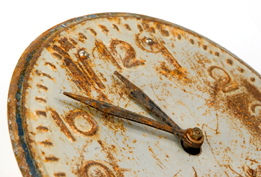Lesson 1
1. Lesson 1
1.5. Explore
Module 6: Measurement
Explore
accuracy: how close a measured value is to the true value
Source: MathWorks 12 Student Book/Teacher Guide. (Vancouver: Pacific Educational Press, 2011.)
In Try This 1 you worked with a variety of measurement tools and a variety of objects to measure. You may have discovered that some measurement tools are better suited for measuring large objects when accuracy may not be as important. However, others are better suited for measuring small objects where greater accuracy may be needed.
Suppose you measure the length of a wall using the length of your foot as a referent. As you can imagine, this method of measurement is not very accurate for a number of reasons. For example, you might not walk in a straight line, or your feet might not touch the same way each time, which would leave ample room for error. Instead, if a measuring tape is used, the length of the measurement will be more accurate, since it is a single measurement along a straight line.
It is important to recognize and choose the correct measuring device that is best suited for the required accuracy of a measuring task.
Self-Check 1
Order the following clocks from the least accurate time keeper to the most accurate time keeper. Explain your choice.
- alarm clock

Martin Poole/Photodisc/Thinkstock
- hourglass

iStockphoto/Thinkstock
- rusty clock

Hemera/Thinkstock